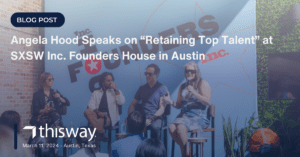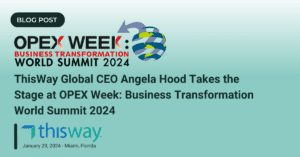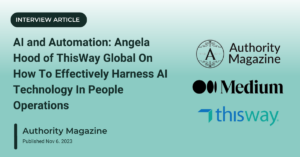Workforce recruitment companies always battle diversity issues every day. While some believe that diversity in the workplace is as simple as meeting the required quotas for employee race and gender, it’s much, much more than that. That’s why we’ve compiled what we believe to be the 7 biggest diversity issues in the workplace that employers should focus on improving for their organizations.
What True Diversity in the Workplace Means
Diversity in the work environment promotes acceptance, respect, and teamwork despite differences in race, age, gender, native language, political beliefs, religion, sexual orientation, or communication styles among employees.
There are many benefits to having a more diverse workplace. Process and product innovation results from having employees from a wide variety of demographics and backgrounds. When different minds come together to achieve a common goal, the result can be monumental. In fact, it has been reported that companies that practice diversity and inclusion in the workplace outperform other non-diverse companies by 15 percent.
A recent research poll from LinkedIn indicated that 60% of respondents believe that diversity within their sales team has contributed to their teams’ success, and organizations in the top quartile for gender diversity have a +25% likelihood of financially outperforming their peers, while those in the top quartile for ethnic diversity have a +36% likelihood of financial outperformance; additionally, diverse companies earn 2.5x higher cash flow per employee, inclusive teams are over 35% more productive, and diverse teams make better decisions 87% of the time.
However, as the workplace becomes more diverse, more issues arise accordingly. HR personnel and recruitment professionals need to be aware of the various challenges associated with diversity so that it can be prevented and addressed. For this reason, we’ve created a list of the biggest diversity issues in the workplace.

Unbiased Candidate Sourcing & Matching Engine For Talent Acquisition
1. Acceptance and Respect
A fundamental value that contributes to a successfully diversified workplace is respect among workers and employees. When there is a lack of acceptance of the diverse culture and beliefs among employees, conflicts may arise. Sometimes, this conflict turns to animosity and may even effectuate situations of violence.
When employees accept the differences between each other, it results in a sharing of ideas and effective collaboration. Acceptance fosters mutual respect and prevents conflicts from arising.
Diversity training will help employees understand, accept, and respect each’s other’s differences.
2. Accommodation of Beliefs
Diversity in cultural, spiritual, and political beliefs can sometimes pose a challenge in a diverse workplace. Employees need to be reminded that they shouldn’t impose their beliefs on others to prevent spats and disputes. They also need to make sure to keep their ethnic and personal beliefs independent of their work responsibilities and duties.
3. Ethnic and Cultural Differences
According to a New York Times report, there are only 5 African-American CEOs out of Fortune 500 companies. As of late 2023, that number had improved to 8 African-American CEOs, the highest since the listing was started in 1955. Furthermore, a University of Wisconsin study revealed that people with African-American sounding names are 14% less likely to get a callback.
Sadly, issues from ethnic and cultural differences are still present in the workplace. There are still some individuals who hold prejudice against people who have different ethnic, cultural, and religious backgrounds as their own.
This prejudice and discrimination should never be tolerated in the workplace (or anywhere else). Internal company policies with clear and objective regulations should be put in place to prevent employees from demonstrating prejudice. Cultural sensitivities training and diversity awareness programs in the workplace can help address this issue.
4. Gender Equality
According to a recent survey, 40% of people believe that both men and women will hire men over women. This is supported by another study that shows that men are 30% more likely to be promoted to a managerial position than women. Additionally, men earn an approximately 24.1% higher base pay than women. According to 2024 stats from the Bureau of Labor Statistics, the share of women in the labor force was only expected to grow from 46.8 percent in 2014 to 47.2 percent in 2024, a forecasted growth of only 0.4 percent.
In the past, women were paid less than men, but the Equal Pay Act has changed that. In recent years, there has been an influx of women in the workplace. Employers need to prevent gender discrimination and maintain equality regarding hiring, salary, opportunities, and promotions.
5. Physical and Mental Disabilities
Often, disabled employees have a difficult time navigating through their workplace because proper accommodations as simple as wheelchair ramps are not available. Some special needs employees also have service dogs, and some office buildings don’t allow them inside. Make arrangements for service dogs to be permitted in your place of work.
Have procedures in place for people with physical or mental disabilities. Some companies have a “quiet room” so that when employees start to feel anxious, they can use that room to ease their anxiety.
Be supportive to your disabled employees and avoid discriminatory or derogatory remarks. Ensuring a fair and comfortable work environment for employees with physical and mental disabilities helps successfully create a more diverse workforce.
6. Generation Gaps
By 2025, millennials will make up 75% of the workforce, and they are changing the work culture. Employees from other generations may have difficulties adapting to changes in the workplace and the work culture that the younger generation are bringing about.
In larger corporations, there are more diversified age groups, from teenagers to senior citizens. As a result, cliques and social circles may be formed, and some workers may be isolated from the team.
There may also be times that workers from different generations may disagree with how things should be done. To maintain teamwork and collaboration, create an open communication culture within your organization to help bridge the gap between generations.
7. Language and Communication
Language and communication barriers are ever-present in companies with a diverse workforce. Often, US or UK companies hire people whose native tongue or first language is not English, so employees and managers sometimes have difficulties in getting their message across. This can lead to miscommunication and productivity loss.
Language training for non-native English speakers can often prevent this from happening. Hiring multilingual or bilingual employees can also help bridge the gap.
Increasing diversity in the workplace will benefit your company in the long run. In fact, companies with a more diverse workforce perform 35% above national industry medians.
Make sure that your company works to increase diversity in the workplace right from the very beginning. To ensure that your recruitment process promotes diversity and remains unbiased, employ the use of AI machine learning technology. At ThisWay Global, our Ai4JOBS® machine learning algorithm provides objective and analytical diversity recruitment results.n









